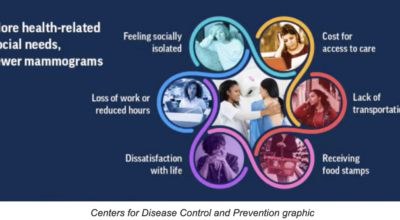Johnston: Getting children to eat vegetables
Published 11:54 am Wednesday, January 9, 2019

- Shonda Johnston is the Clark County Extension agent for family and consumer sciences.
“Ewww, broccoli!”
“I’m not eating that green stuff”
“Blech, carrots!”
Many children say they do not like vegetables, but often they’ve not even tried them. I remember my parents encouraging me to try ‘at least one bite’ of everything on my plate, vegetables included.
Little Shonda was not thrilled about this so I would do it, but I would never admit to liking anything I put in my mouth.
I would continually pick out the mushrooms in spaghetti sauce. I would eat the insides of the stuffed pepper and leave an empty pepper carcass on my plate.
Looking back, Little Shonda refused to eat more than one bite of many things my parents cooked. Grown-up Shonda will readily admit I did that mostly out of spite (sorry, Mom!) and that has come back around to bite me as I am now attempting to get my children to try ‘just one bite’ of their vegetables.
So why do children need to eat vegetables?
Fruits and vegetables are vital sources of fiber and many vitamins children need for their health, growth and development. It is important for children to eat the appropriate servings of vegetables daily.
Research now shows early eating habits may carry over into adulthood so it is important for parents to introduce good eating habits in children when they are young. However even if your kiddos are older, it is never too late to start.
Here are several suggestions for getting children to eat vegetables, no matter their age.
Be a role model
Adults need vegetables too, so model good eating habits by eating the same vegetables you are offering to your children.
That isn’t difficult for veggies you like, but it is just as important to model those habits with vegetables that you may not like.
I do not ‘love’ green beans, but when I introduced green beans to my children, I always had a serving on my plate.
I would take at least one bite (and I made sure my kids were watching when I took that bite) and encourage the kids to take their bite too.
My kids haven’t figured out yet that when Mom takes her plate to the sink, there is a nice serving of green beans still on the plate.
All they noticed was I had the veggies on my plate, I took ‘at least one bite’ and it looked like I was eating the same things they were.
Set appropriate rules
My daughter is notorious for telling me she doesn’t like something before she even has tried it.
That doesn’t fly in my household, so she knows she has to take ‘at least one bite’ (sound familiar?) before she can say she doesn’t like it. But make sure you stay positive.
Using strategies such as punishment, threats, force or even offering the child a reward have been shown to be unsuccessful ways of teaching children to eat vegetables. Vegetables should be offered in a relaxed environment.
Be creative
Offer children vegetables in different forms (cooked, raw and mixed with other foods) before you decide they do not like them.
Children tend to dislike mushy vegetables but will like the same vegetable in raw form.
Many parents tend to throw in the towel after the child refuses a vegetable the first time.
It may take a lot more tasting before your child gets to the point where he or she likes the vegetable so be sure to offer several vegetable options at a meal which allows children to eat the one they like while trying ‘one bite’ of the others.
Here are some other quick tips on getting kids to eat more vegetables daily:
— Offer vegetables daily. Children will not eat vegetables if parents do not cook and serve them.
— Let children pick out a vegetable of the week at the grocery store or farmers market.
— Have ready to eat vegetable snacks in small bags in the refrigerator.
— Add lettuce leaves to sandwiches.
— Add blended vegetables such as spinach to spaghetti sauce, soups and casserole.
— Make food fun. Let children create funny faces or animals with cut up vegetables.
— Let children help prepare vegetable recipes.
— Allow kids to make their own salad. Put out small bowls of baby carrots, cherry tomatoes, shredded leaf lettuce, raisins, fruit and crunch noodles. They love the feeling of control that comes from doing it themselves.
For more information on getting children to eat vegetables or ideas on how to prepare vegetables, feel free to contact the Clark County Cooperative Extension Service at 859-744-4682.
Shonda Johnston is the Clark County Extension agent for family and consumer sciences. She can be reached at 859-744-4682 or by email at shonda.johnston@uky.edu.





